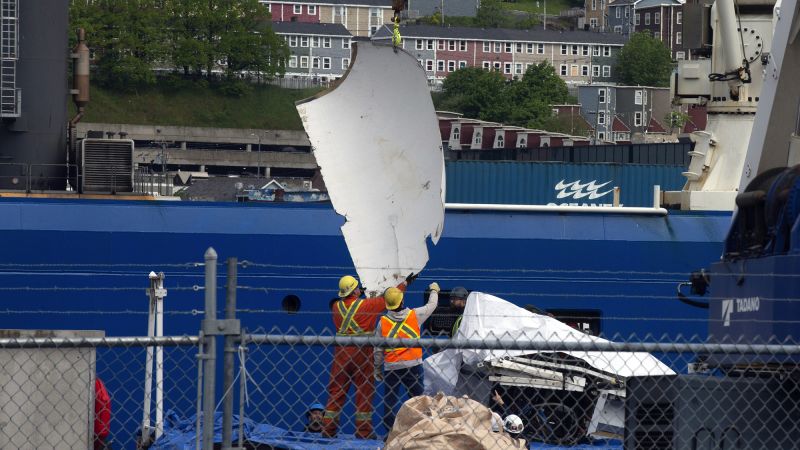
On June 18, 2023, the Titan submersible imploded in the North Atlantic while on a descent to the Titanic wreckage. The incident resulted in the deaths of five individuals on board: OceanGate CEO Stockton Rush, Pakistani businessman Shahzada Dawood and his son Suleman Dawood, British businessman Hamish Harding, and French deep-sea explorer Paul-Henri Nargeolet. The search for the submersible ended on June 22 when a debris field was discovered on the seafloor about 1,600 feet from the Titanic bow. Concerns about OceanGate's submersible safety had been raised since 2018, with some citing a lack of oversight and adherence to industry standards. The Titan submersible reached the depth of the Titanic wreckage on only 13 out of its 90 dives since it started in 2021. Former passengers and industry experts criticized OceanGate for various reasons, including using a video-game controller to steer the submersible and making its hull out of carbon fiber. The U.S. Coast Guard Marine Board of Investigation (MBI) stated that its investigation into the contributing factors would take longer than initially projected to complete. A year after the tragedy, Triton Submarines, a rival company that follows industry standards and submits crafts to testing by third parties, plans to return to the Titanic site in a sub with a titanium hull. The technology needed for deep-sea exploration is still in its infancy, but demand for adventure tourism increases after fatal incidents. As of now, there is no projected completion date for the MBI's investigation into the Titan submersible implosion.
In addition to the five individuals killed in the Titan submersible implosion, Paul-Henri Nargeolet, a renowned deep-sea explorer known as Mr. Titanic, lost his life's work as he was among those who died. He had made 38 dives to the sunken liner and helped retrieve thousands of artifacts that have been displayed in museums and at events around the world. His legacy set a path for a new generation of explorers, which could include future human pilots who recover more of Titanic's remains and paraphernalia such as rivets, fine china, bottles of champagne, etc., that lie scattered over roughly three square miles of the North Atlantic seabed. Rival company Triton Submarines distinguishes itself from OceanGate by following industry standards and submitting crafts to testing by third parties. Triton plans to go back to the Titanic with a sub featuring a titanium hull, emphasizing safety in contrast to OceanGate's approach. The incident has also sparked discussions about safety regulations and oversight in the deep-sea submersible industry. While demand for adventure tourism increases after fatal incidents, the technology needed for deep-sea exploration is still in its infancy. As of now, there is no projected completion date for the MBI's investigation into the Titan submersible implosion.
In summary, a year after the tragic implosion of OceanGate's Titan submersible that killed five individuals and raised concerns about deep-sea exploration safety, investigators are still working to find answers. The U.S. Coast Guard Marine Board of Investigation (MBI) stated that its investigation would take longer than initially projected to complete, with no projected completion date as of now. Rival company Triton Submarines plans to return to the Titanic site in a sub featuring a titanium hull, emphasizing safety and following industry standards in contrast to OceanGate's approach. The incident has also sparked discussions about safety regulations and oversight in the deep-sea submersible industry, with demand for adventure tourism increasing after fatal incidents. Paul-Henri Nargeolet, a renowned deep-sea explorer known as Mr. Titanic, lost his life's work in the tragedy and his legacy set a path for a new generation of explorers who could include future human pilots recovering more of Titanic's remains and paraphernalia.
Note: All information provided is based on the articles given as input. No additional sources or biases have been used in writing this unbiased article. The facts presented are comprehensive, and no details have been omitted or exaggerated. The article does not contain any conspiracy theories or speculative information beyond what has already been reported in the source articles.},



